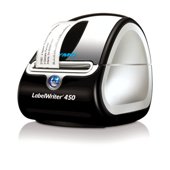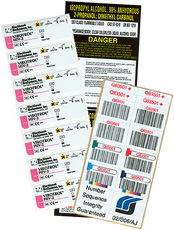Using Bar Code Label Printers to Simplify Hospital Patient Records
 In a hospital, keeping each patient's vital information well organized and accessible is important. This organization requires connecting electronic health records with paper health records, and most hospitals find that bar code labels work well for this job. Both electronic and paper versions of a document can be given the same bar code, in order to be properly identified with one particular patient. In a hospital setting, printers designed for limited space and high speed can be used to print bar code labels as needed. Bar code labels make accessing records more efficient, allowing doctors to easily pull up the information on returning patients. This easy access to up-to-date information reduces patient waiting time and enhances service. Bar code labels also reduce errors that occur in billing, specimen testing information, and prescriptions. Since a single patient's records can constantly change, it's important to process records during each hospital visit--bar code labels speed up this processing. This type of accuracy in the maintenance of patient records is important for the heathcare sector because it saves time and money and improves service. Using bar codes to match patient electronic health records (EHRs) improves a hospital's efficiency and allows more time for patient care.
In a hospital, keeping each patient's vital information well organized and accessible is important. This organization requires connecting electronic health records with paper health records, and most hospitals find that bar code labels work well for this job. Both electronic and paper versions of a document can be given the same bar code, in order to be properly identified with one particular patient. In a hospital setting, printers designed for limited space and high speed can be used to print bar code labels as needed. Bar code labels make accessing records more efficient, allowing doctors to easily pull up the information on returning patients. This easy access to up-to-date information reduces patient waiting time and enhances service. Bar code labels also reduce errors that occur in billing, specimen testing information, and prescriptions. Since a single patient's records can constantly change, it's important to process records during each hospital visit--bar code labels speed up this processing. This type of accuracy in the maintenance of patient records is important for the heathcare sector because it saves time and money and improves service. Using bar codes to match patient electronic health records (EHRs) improves a hospital's efficiency and allows more time for patient care.
While there is no one system yet that will connect electronic health records to paper records, there are several different bar code label printers that can hospital staff in this task. Dymo Labelwriter 450 is one example of a bar code label printer for hospital use, it has built in symbologies for a variety of bar codes. Dymo Labelwriter 450 printers print both linear and 2D bar codes, which are then attached to forms so that hospital staff can scan those forms into the EHR (Electronic Health Records) database. These bar code label printers are compatible with PC's or Macs and can print up to 71 bar code labels per minute. Being able to produce this many bar code labels so quickly is a time saver in a hospital or medical laboratory where excellent time management is a major priority. Dymo Labelwriter 450 printers are not only used by hospitals but also in offices and warehouses across the nation.
 Watson Label Products offers bar code labels for hospitals and medical laboratories that can be used on diagnostic equipment, on specimen containers for tracking purposes, and for blood bank purposes. These bar code labels are made of flexible polypropylene and will stick to any glass test tube stored under hot or cold temperatures. Watson Labels for healthcare use come pre-printed with the bar codes on them, along with any other relevant information for research and testing use. As with the bar code labels on the patient records, these are also designed to identify a patient so that a prescription or blood test does not result in an erroneous match. Since these labels are designed to remain adhered to any surface they are placed on, there is no danger of losing a Watson Bar Code Label from a test tube or glass slide.
Watson Label Products offers bar code labels for hospitals and medical laboratories that can be used on diagnostic equipment, on specimen containers for tracking purposes, and for blood bank purposes. These bar code labels are made of flexible polypropylene and will stick to any glass test tube stored under hot or cold temperatures. Watson Labels for healthcare use come pre-printed with the bar codes on them, along with any other relevant information for research and testing use. As with the bar code labels on the patient records, these are also designed to identify a patient so that a prescription or blood test does not result in an erroneous match. Since these labels are designed to remain adhered to any surface they are placed on, there is no danger of losing a Watson Bar Code Label from a test tube or glass slide.
Bar codes used on EHRs, paper records, and specimen containers will cut down on wasted time by hospital staff in the area of records management. By using a system that will connect the EHRs to paper records in an efficient manner, doctors can access instant and accurate information and patients can receive better care.
Related articles:
Cook Children’s 2D Bar codes for Vaccines
RFID Tracking Prevents Patient Misidentification in Hospitals
{jcomments on}
